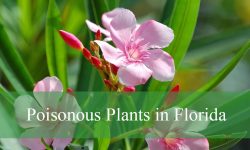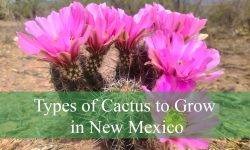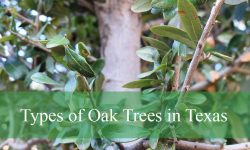Discover the Red Flowering Dogwood tree (Cornus florida) and how to grow and care for it in USDA Growing Zones 5-9. Explore its features, maintenance tips, and why it’s a pollinator-friendly choice.
Introduction to Red Flowering Dogwood Tree
The Red Flowering Dogwood tree, scientifically known as Cornus florida, is a captivating and ornamental addition to any landscape. This deciduous tree, native to the eastern United States and can thrive in USDA Growing Zones 5-9, is renowned for its exquisite beauty and vibrant blossoms. As an introduction to the Red Flowering Dogwood tree, let’s delve into its distinctive characteristics that make it a cherished favorite among garden enthusiasts and nature lovers alike.
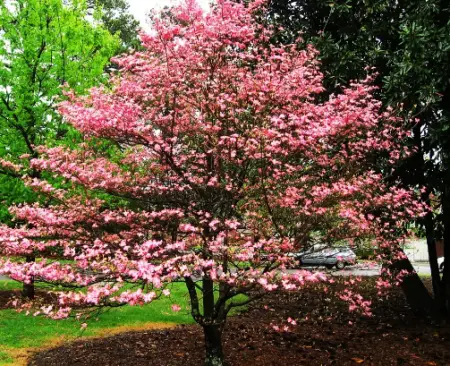
The Red Flowering Dogwood is celebrated for its stunning springtime display. In early to mid-spring, before its leaves emerge, this tree bursts into a profusion of elegant, four-petaled flowers. These blossoms range in color from soft pink to deep crimson, creating a breathtaking spectacle that attracts pollinators like bees and butterflies. The contrast between the lush green leaves and the vibrant flowers is a sight to behold, making it a standout feature in gardens, parks, and wooded areas.
Beyond its striking spring bloom, the Red Flowering Dogwood also offers year-round appeal. As summer progresses, its leaves mature into a rich green canopy that provides valuable shade in the garden. In the fall, the tree undergoes yet another transformation, as its leaves transition to shades of red, purple, and scarlet, adding a dramatic burst of color to the landscape.
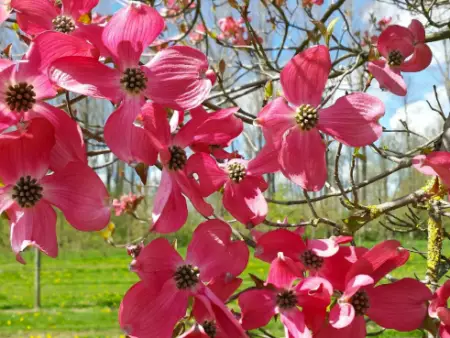
Moreover, this tree boasts a distinctive and attractive branching pattern, with horizontally spreading branches that lend a graceful, layered appearance. Its smooth, grayish-brown bark adds further visual interest, particularly in the winter months when the tree’s structure is revealed.
The Red Flowering Dogwood is not just a feast for the eyes; it also provides essential sustenance for wildlife. Its red berries, which ripen in the late summer, are a valuable food source for birds and small mammals. This tree’s ecological significance extends beyond its beauty, making it an asset to both the garden and the local ecosystem.
Key Information of Red Dogwood Tree
- Botanical Name: Cornus florida
- Type: Deciduous
- Mature Height: 15 – 30 feet
- Mature Spread: 15 – 20 feet
- Sun Exposure: Full Sun, Partial Shade
- Soil: Widely Adaptable
- Moisture: Moderate
- Growth Rate: Medium
- Flower Color: Pink Ages Deep Rosy Red
- Foliage Color: Green
- Fall Color: Red, Burgundy / Purple
- Pollinator Friendly: Yes
- Pruning Time: When Dormant
Planting and Care Guide
Sunlight: Red Flowering Dogwood trees thrive in locations that receive full sun to partial shade. The choice between full sun or partial shade should be based on your local climate and weather conditions. In regions with hot summers, providing some afternoon shade can help protect the tree from excessive heat stress.
Soil Quality: Ensuring well-draining soil is crucial to prevent waterlogged roots. While Red Flowering Dogwood trees are adaptable to various soil types, they tend to thrive in organically rich soil with a neutral pH. Amending the soil with compost or organic matter can help improve its fertility and drainage.
Before planting your Red Flowering Dogwood tree, take the time to prepare the soil properly. Consider conducting a soil test to assess its pH level and nutrient content. This will help you make necessary amendments to create the ideal growing environment for your tree.
When planting, dig a hole that is slightly wider than the root ball and deep enough to accommodate it comfortably. Place the tree in the hole and backfill with the amended soil. Ensure that the top of the root ball is level with the surrounding soil surface.
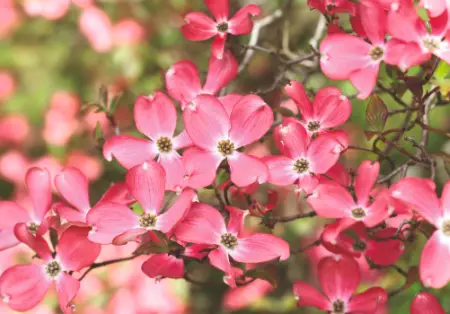
Watering: Proper watering is essential for the establishment and ongoing health of your Red Flowering Dogwood tree. After planting, thoroughly water the tree to settle the soil and eliminate air pockets. Maintain moderate moisture levels by watering regularly. Keep the soil consistently damp but avoid waterlogged conditions. Adjust your watering frequency based on local weather conditions and rainfall.
Pruning: Pruning helps maintain the tree’s shape, remove dead or damaged branches, and promote healthy growth. Prune your Red Flowering Dogwood tree when it is dormant, typically during late winter or early spring, before new growth begins. Remove any dead, diseased, or crossed branches. You can also shape the tree as desired, but avoid excessive pruning, as Red Flowering Dogwoods have a naturally graceful form.
Tips for properly caring for Red Flowering Dogwood Tree
In cooler summer climes, dogwood trees may tolerate full sun but prefer partial shade. They can tolerate a variety of soil conditions and are cold-hardy in zones 5 through 9. They do, however, favor acidic, moist, well-drained soil. They can withstand some drought after they are established, but further watering is advised.
Avoid soil that is too saturated with water, and if your location frequently floods after rain or irrigation, raise the planting area by adding 18 to 24 inches of soil, then mulch the roots for insulation and moisture retention.
Avoid using high-nitrogen lawn fertilizers next to dogwood trees because they won’t encourage bloom growth. Instead, use an all-purpose fertilizer as directed on the package for blooming plants in the early spring and middle of the summer. After blooming or in late winter, prune as necessary to remove crossed branches and regulate growth.
Common Questions Regarding Red Flowering Dogwood Tree
What is a Red Flowering Dogwood tree?
– The Red Flowering Dogwood tree, scientifically known as Cornus florida, is a deciduous tree native to the eastern United States. It is renowned for its vibrant, four-petaled flowers that range in color from soft pink to deep crimson.
Where is the best place to plant a Red Flowering Dogwood tree?
– Red Flowering Dogwood trees thrive in locations with full sun to partial shade, depending on the local climate. They prefer well-draining, moist, acidic soil. Choosing the right location is essential for their health and vitality.
Do Red Flowering Dogwood trees tolerate drought?
– Once established, Red Flowering Dogwood trees can tolerate some drought. However, to ensure their best growth and health, it’s advisable to provide supplemental watering during dry periods, especially in the early stages.
When should I prune my Red Flowering Dogwood tree?
– Pruning is best done when the tree is dormant, typically in late winter or early spring. This is the ideal time to remove dead or damaged branches and shape the tree as desired.
What is the fall color display of a Red Flowering Dogwood tree?
– In the fall, the green foliage of a Red Flowering Dogwood tree undergoes a vibrant transformation, turning shades of red, burgundy, or purple. This seasonal change adds a stunning display of color to your landscape.
Are Red Flowering Dogwood trees pollinator-friendly?
– Yes, Red Flowering Dogwood trees are pollinator-friendly. They attract pollinators like bees and butterflies, making them a valuable addition to garden ecosystems.
How can I fertilize my Red Flowering Dogwood tree for optimal growth?
– Avoid high-nitrogen lawn fertilizers near these trees, as they promote foliage growth but not flower development. Instead, use an all-purpose fertilizer for blooming plants in early spring and mid-summer, following the label instructions for application rates.
Do Red Flowering Dogwood trees tolerate standing water?
– No, these trees do not tolerate standing water well. If your soil tends to puddle after rain or watering, consider elevating the planting area by adding 18-24 inches of soil above the native soil line to prevent waterlogging.
What should I do if my Red Flowering Dogwood tree develops crossing branches or undesirable growth?
– Pruning can help address crossing branches and control the tree’s shape. It’s recommended to prune as needed in late winter or after blooming to maintain a healthy and aesthetically pleasing form.
Are Red Flowering Dogwood trees suitable for my gardening zone?
– Red Flowering Dogwood trees are cold-hardy and suitable for growing zones 5 through 9, making them adaptable to a wide range of climates in the United States.
These frequently asked questions should provide valuable information for those interested in planting and caring for Red Flowering Dogwood trees.
Conclusion
The Red Flowering Dogwood tree, with its stunning flowers and adaptability, is an excellent choice for garden enthusiasts in USDA Growing Zones 5-9. Follow our care and planting guide to ensure a healthy and thriving tree that not only beautifies your landscape but also contributes to the local ecosystem by attracting pollinators. Enjoy the vibrant beauty of this tree in your garden for years to come.

